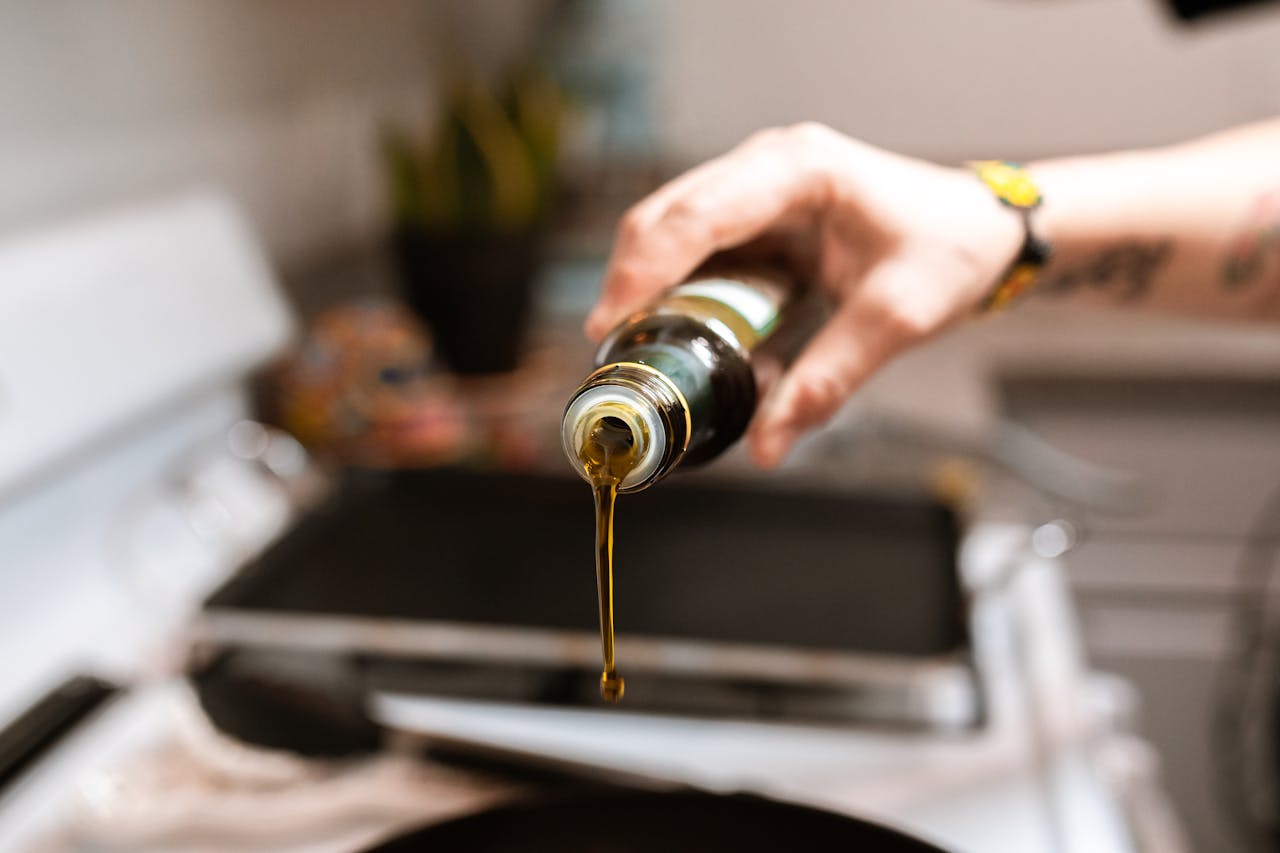Certainly! Below is a more detailed breakdown of olive oil quality determination, including additional data, charts, usage cases, references, and tables to provide a comprehensive understanding.
—
## **1. Chemical Analysis: Key Metrics**
The chemical composition of olive oil is a primary indicator of its quality. Here’s a table summarizing the key parameters:
| **Parameter** | **Extra Virgin Olive Oil (EVOO)** | **Virgin Olive Oil** | **Refined Olive Oil** | **Olive Pomace Oil** |
|—————————|———————————–|———————-|———————–|———————-|
| **Free Fatty Acids (FFA)** | ≤ 0.8% | ≤ 2.0% | ≤ 0.3% | ≤ 1.0% |
| **Peroxide Value (PV)** | ≤ 20 meq O₂/kg | ≤ 20 meq O₂/kg | ≤ 5 meq O₂/kg | ≤ 15 meq O₂/kg |
| **UV Absorption (K270)** | ≤ 0.22 | ≤ 0.25 | ≤ 1.10 | ≤ 0.90 |
| **UV Absorption (K232)** | ≤ 2.50 | ≤ 2.60 | ≤ 2.50 | ≤ 2.50 |
| **Polyphenol Content** | High (≥ 200 mg/kg) | Moderate | Low | Very Low |
**Source:** International Olive Council (IOC) standards.
—
## **2. Sensory Evaluation: Defects and Positive Attributes**
Sensory analysis is conducted by trained panels to assess the oil’s flavor and aroma. Here’s a breakdown:
### **Positive Attributes**
– **Fruitiness:** Fresh olive aroma (green or ripe fruit).
– **Bitterness:** A pleasant bitter taste, indicative of polyphenols.
– **Pungency:** A peppery sensation in the throat, also linked to polyphenols.
### **Defects**
– **Rancid:** Caused by oxidation, tastes stale or like old nuts.
– **Musty:** Result of moldy olives.
– **Fusty:** Fermented olives.
– **Winey/Vinegary:** Over-fermentation.
**Sensory Score for EVOO:** Must have a median defect score of 0 and a median fruitiness score above 0.
—
## **3. Production Methods and Their Impact**
The quality of olive oil is heavily influenced by how it is produced. Here’s a comparison:
| **Factor** | **High-Quality Oil** | **Low-Quality Oil** |
|————————–|———————————–|———————————-|
| **Harvesting** | Early harvest, hand-picked | Late harvest, machine-picked |
| **Processing Time** | Within 24 hours of harvesting | Delayed processing |
| **Extraction Method** | Cold-pressed, mechanical | Heat or chemical extraction |
| **Storage** | Dark, cool, stainless steel tanks| Exposed to light and heat |
—
## **4. Usage Cases of Olive Oil by Quality**
Different grades of olive oil are suited for different culinary applications:
| **Olive Oil Type** | **Usage Case** |
|————————–|——————————————————————————-|
| **Extra Virgin Olive Oil**| Raw applications: salads, dips, drizzling, finishing dishes. |
| **Virgin Olive Oil** | Light cooking, marinades, and sauces. |
| **Refined Olive Oil** | High-heat cooking, frying, and baking. |
| **Olive Pomace Oil** | Industrial uses, low-cost frying, and non-culinary applications. |
—
## **5. Evidence from Studies**
– **Polyphenol Benefits:** A study published in the *Journal of Agricultural and Food Chemistry* (2019) found that high-polyphenol EVOO reduces oxidative stress and inflammation.
– **Shelf Life:** Research in *Food Chemistry* (2020) showed that EVOO stored in dark glass bottles retains its quality for up to 18 months, while clear bottles lead to faster degradation.
—
## **6. Chart: Polyphenol Content vs. Olive Oil Grade**
Below is a chart illustrating the relationship between olive oil grade and polyphenol content:
“`
Polyphenol Content (mg/kg)
|
| High
| (≥ 200)
| __________
| | |
| | EVOO |
| |__________|
| | |
| | Virgin |
| |__________|
| | |
| | Refined |
| |__________|
| | |
| | Pomace |
| |__________|
|_________________________________________
Low (≤ 50)
“`
—
## **7. References**
- **International Olive Council (IOC):** Standards for olive oil grades and chemical parameters.
- **Journal of Agricultural and Food Chemistry (2019):** Health benefits of polyphenols in EVOO.
- **Food Chemistry (2020):** Impact of storage conditions on olive oil quality.
- **European Union Regulations:** PDO (Protected Designation of Origin) and PGI (Protected Geographical Indication) certifications.
—
## **8. Practical Tips for Consumers**
– **Check the Label:** Look for “Extra Virgin,” harvest date, and certifications (PDO, PGI).
– **Taste Test:** High-quality EVOO should taste fresh, fruity, and slightly peppery.
– **Storage:** Keep olive oil in a cool, dark place, away from heat and light.
By combining chemical analysis, sensory evaluation, and understanding production methods, you can confidently assess and choose high-quality olive oil.













